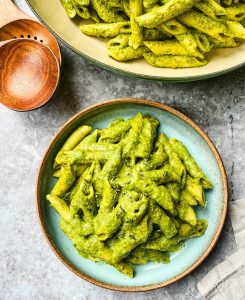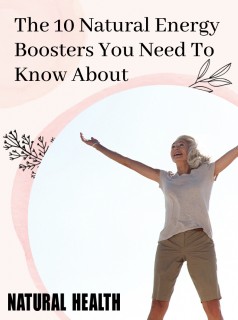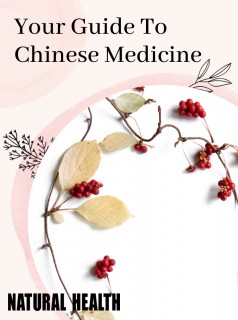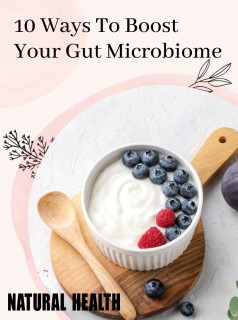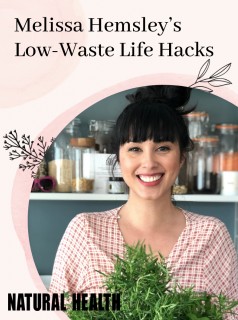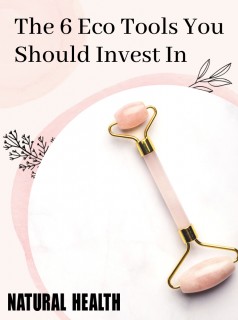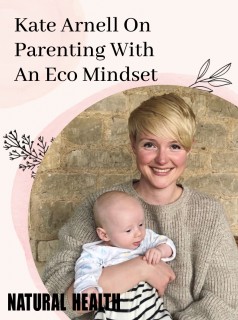Get started now to grow your own health-boosting garden this summer, says Allison Jacobs
Get started now to grow your own health-boosting garden this summer, says Allison Jacobs
“A third of all people in the UK now grow their own”
Getting out in the garden can do wonders for your health. Not only is preparing the soil great exercise, but surrounding yourself in nature and the great outdoors is great for the soul too! And growing your own this year will provide you with bountiful supplies of nutrient-rich vegetables to fight disease and keep your body in tip-top condition. Here are six of the best foods to grow to boost health and vitality.
1. Garlic
For such a little bulb, garlic really does pack a mean health punch. It is anti-bacterial, anti-fungal and anti-viral, and regular consumption can help to reduce blood cholesterol, and lower systolic and diastolic blood pressure. Its amazing health-boosting properties can also help you avoid a thrombus – a blood clot in an artery or vein which can stop blood flow, leading to heart attack or strokes. It increases nitric oxide production in the blood vessels, helping to dilate them, and also helps dissolve clots that might be forming.
Get sowing!
“It’s brilliantly easy to grow, and so much better than shop-bought garlic!” explains Lucy Halsall, editor of Grow Your Own magazine. “Buy garlic cloves from a garden centre (supermarket garlic won’t always grow so well), split the head into individual cloves, and throw away the smallest ones. Plant the rest 5cm deep and 25cm apart in a really sunny spot. Water lightly now and then, and then simply pull up the plants come July, when the leaves have started turning a little yellow.”
2. Carrots
Parents have been telling kids to munch carrots for years because they will make them see in the dark. This is because beta-carotene, which carrots are full of, is converted to vitamin A in the liver. It’s then taken via the bloodstream to the retinas where it converts into rhodopsin, a purple pigment vital for night vision. Betacarotene also protects against macular degeneration. As well as vitamin A, these veggies boast impressive amounts of B1, B2, C, D and E, which reduce free radical damage in the body, preventing illness and damage to DNA.
Get sowing!
“These crunchy roots grow really well from seed – just make sure your soil is free from stones, make a shallow drill 1 to 2cm deep and trickle the seeds thinly along the base,” says Lucy. “Keep the drill well watered till your seedlings emerge, which can take a couple of weeks. Carrots only suffer from one real pest – carrot root fly – but this is really easy to control. Simply cover the rows with some insect-proof mesh to stop the adult female from laying her eggs on the plants.”
3. Broccoli
There’s a host of studies pointing to this cruciferous vegetable as a shining light in the fight to prevent cancer, and it’s due to its ability to lessen the three metabolic problems in the body: inflammation, oxadative stress and detoxification. In the laboratory, compounds made from glucosinolates found in broccoli have been shown to shut down the genetic machinery which activates the inflammatory system, so it may do the same in the body. Broccoli’s also the most concentrated source of antioxidant vitamin C out of all the cruciferous vegetables. Vitamin C supports oxygen metabolism in the body when accompanied by flavanoids which enable it to recycle – such as kaempferol and quercitin – which broccoli is full of.
Get sowing!
“The best way to grow this crop, also known as calabrese, is to sow it directly into the soil in April or May,” says Lucy. “Put pinches of seeds 30cm apart and water well. Then, when seedlings appear thin them to leave the strongest per cluster. These plants are a bit of a target for cabbage white butterflies and pigeons, so simply cover them with netting (you can get this from garden centres) to keep them at bay. Keep well watered and just harvest when the heads are big enough.”
4. Tomatoes
Many people know that tomatoes contain a key cancer-fighting antioxidant, lycopene, which protects the body against free radical damage as well as the skin from ultra-violet rays. But that’s not all these juicy red fruits offer. They’re a great source of potassium, essential for fluid balance in cells as well as heart rate and blood pressure control. Tomatoes contain many flavanoid antioxidants including lutein and xanthins, and eating foods high in flavanoids is known to help prevent lung and oral cancers. They’re also full of immune-boosting vitamin C.
Get sowing!
“It really easy to grow tomatoes, but the seedlings are quite fussy so here I’d actually recommend buying young plants from your garden centre – the range they sell these days is really good!” says Lucy. “Either put one plant per 30cm diameter pot, or space three per growing bag. You can also get hanging basket varieties that trail – these are great if you’ve got a tiny plot. Make sure tomatoes are in a sunny spot, and water them well, adding a tomato feed, too. You’ll be picking from mid to late July.”
5. Chillies
Chillies’ key health component is capsaicin which as well as fighting inflammation has been shown in studies to trigger apoptosis, or cell death, in tumours. Cayenne peppers are a good choice – their anticoagulant properties help prevent blood clots forming, lowering the risk of heart attack and stroke. Even though it’s spicy, cayenne pepper is great for stomach problems; it facilitates healing with both stomach and intestinal ulcers, as well as being shown to reduce blood cholestrol and triglyceride levels, lowering the risk of heart disease.
Get sowing!
“These hot peppers are really attractive, as well as productive,” says Lucy. “As with tomatoes the seedlings are a little bit fussy so it’s better to buy small plants from your garden centre. Pot them on, one plant per 30cm pot and place them in as sunny a spot as you can – a south-facing patio is ideal or even a sunny windowsill will work. Keep well watered and fed with a tomato fertilizer and pick the individual peppers once they’ve changed colour. You can dry most varieties in an airing cupboard and they’ll then keep for years!”
NO GARDEN? NO PROBLEM:
6. Sprouts
The adage good things come in small packages couldn’t be more true of sprouts – and for these you don’t even need a garden! Whether from seeds or beans, sprouts pack a nutritional punch and are perfect for those pushed for space. Alfalfa sprouts are a great source of saponins, which stimulate the immune system, boosting numbers of natural killer cells in the body. They also reduce bad cholesterol, but not the good, and have lowered arteriosclerosis and cardiovascular disease in animals. Radish, clover, soybean and broccoli sprouts are full of phytochemicals such as canavanine, which has shown to be beneficial in the fight against pancreatic, colon cancer and leukaemia.
Get sowing!
“No other crop will give you quicker results – sprouting seeds can be ready to eat in as little as three days!” says Lucy. “You can buy seed sprouters online or use an old jam jar (the important thing is to rinse the seeds daily with fresh water to keep everything hygienic). Soak your seeds overnight then place them in your sprouter. Put them in a warm place (an airing cupboard is ideal) – some benefit from being brought into the light a day or so before eating. The flavour is intense and crunchy – there are loads of different types to try so just experiment!”
Mulching is great gardening practice. It keeps moisture in the soil, stops weeds germinating and prevents heat stress to roots. Try Strulch Garden Mulch which is pH neutral, light and easy to use. It’s made from organic wheat straw, keeping everything the way nature intended, and will last for up to two years on the soil.




